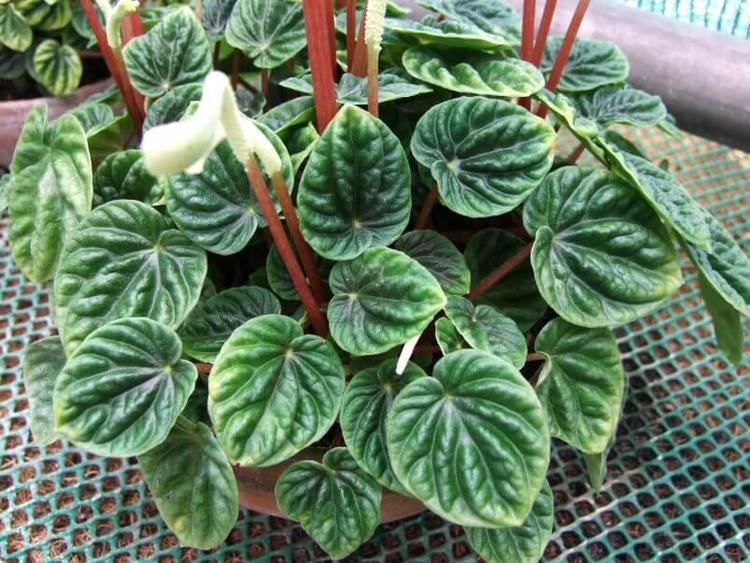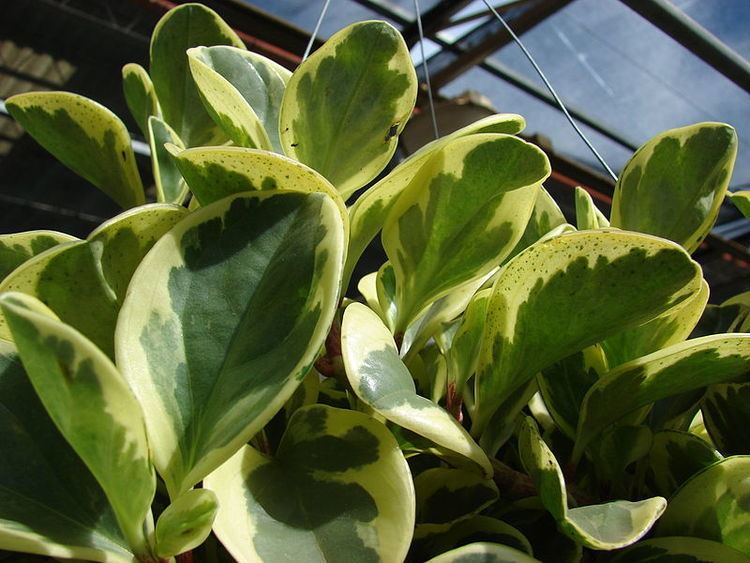Scientific name Peperomia Rank Genus | ||
Lower classifications Peperomia pellucida, Peperomia graveolens, Peperomia nivalis, Peperomia abnormis, Peperomia albovittata | ||
Peperomia propagation
Peperomia (radiator plant) is one of the 2 large genera of the Piperaceae family, with more than 1000 recorded species. Most of them are compact, small perennial epiphytes growing on rotten wood. More than 1500 species have been recorded, occurring in all tropical and subtropical regions of the world, though concentrated in Central America and northern South America. A limited number of species (around 17) are found in Africa.
Contents

Description

Though varying considerably in appearance (see gallery below), these species generally have thick, stout stems and fleshy leaves, sometimes with epidermal windows. Peperomia flowers typically come in yellow to brown conical spikes.

These tropical perennials are grown for their ornamental foliage.They are mostly natives of tropical America. They are compact and usually do not exceed 12 inches (30 cm) in height. They vary considerably in appearance. Some have threadlike, trailing stems and some have fleshy, stout stems. The leaves are smooth and fleshy and may be oval with the leafstalk at or near the center of the leaf blade, or they may be heart-shaped or lance-shaped; their size may vary from 1–4 inches (2.5–10.2 cm) long. They may be green or striped, marbled or bordered with pale green, red or gray, and the petioles of some kinds are red. The tiny flowers are unnoticeable and they grow in the form of cordlike spikes
Horticulture

Peperomias are grown for their ornamental foliage and sometimes for their attractive flowers (Peperomia fraseri). Except for the succulent species, they are generally easy to grow in a greenhouse. Different species (e.g. Peperomia caperata) and cultivars are found in the trade.
Propagation
These plants are usually propagated by seeds. They are also commercially propagated by cuttings. Peperomia cuttings root easily.
Plants can be divided at potting time. They are removed and separated into smaller pieces, each with a few roots attached. Leaf or stem cuttings can also be taken in the spring or summer. The lower leaves of the shoots are removed and a cut is made below the bottom node (joint). They are then laid on a bench for an hour or two to allow a protective callus tissue to form over the cuts. They are then inserted in a propagating case with bottom heat of 70-75 degrees F. It is best not to seal the top completely, as the plants are semi-succulent in nature and excessive humidity is detrimental. When enough roots have formed, cuttings can be planted in 3-inch pots or in hanging baskets.
